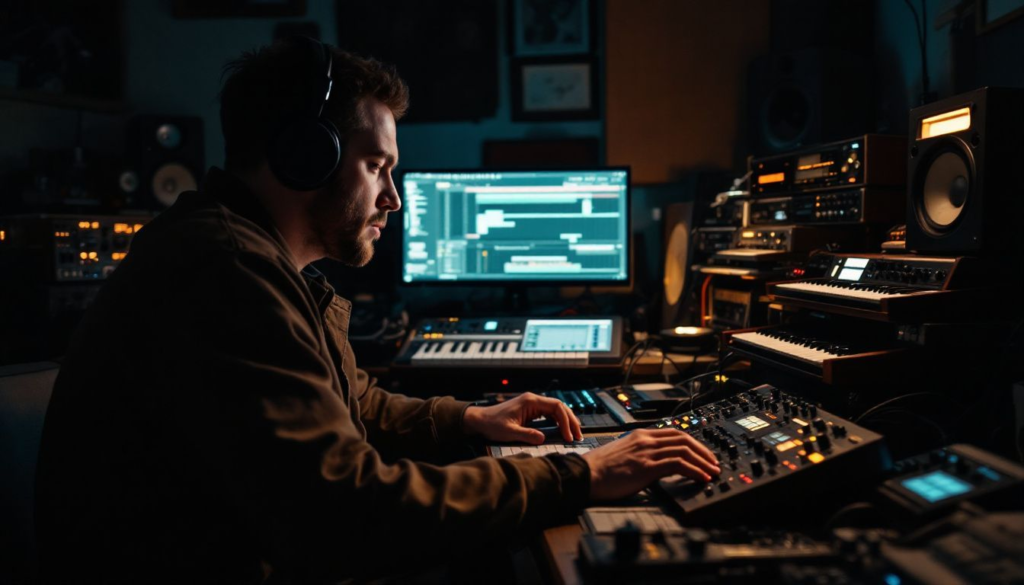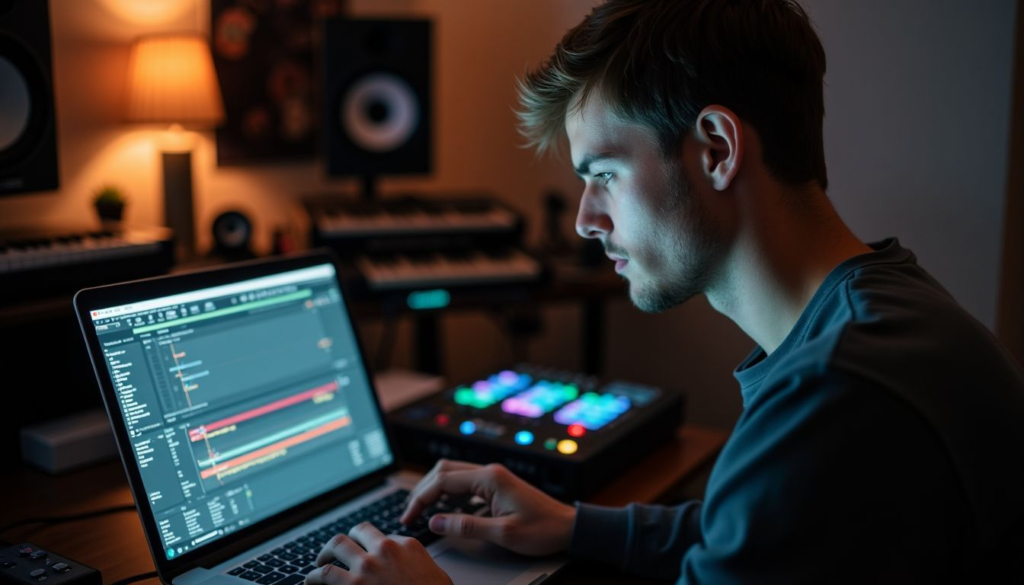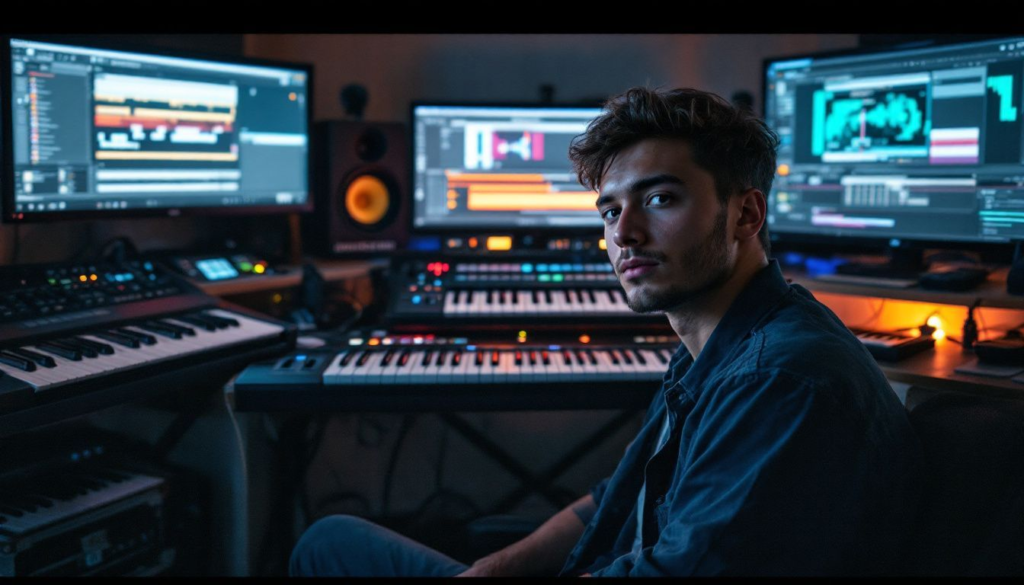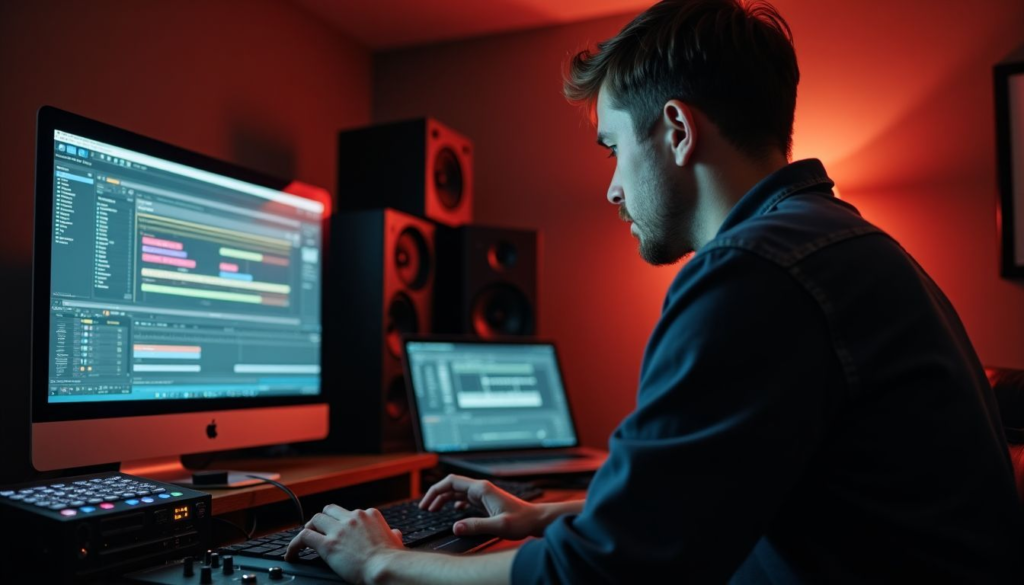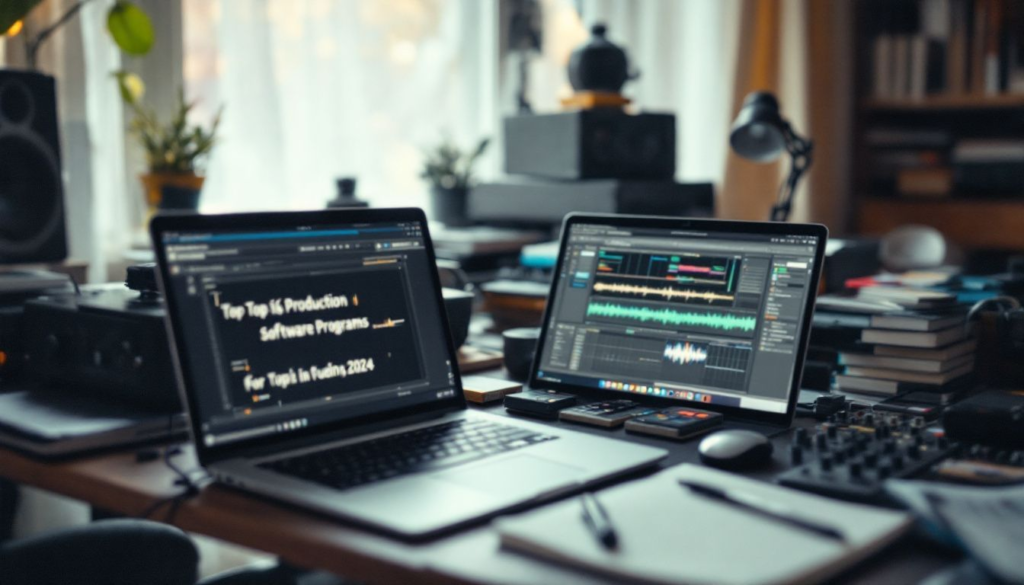Top Electronic Music Gear: Your Ultimate Buying Guide
Choosing the right Electronic Music Gear can feel overwhelming, especially with so many music production tools and musical instruments on the market. Electric circuits have shaped musical sound since as early as the 1760s, changing how we make and enjoy music.
This guide will break down key points to consider, covering synthesisers, MIDI controllers, drum machines, samplers, sequencers, and more. Ready to discover which gear fits your style best?
Key Considerations When Buying Electronic Music Gear
Buying electronic music gear can be exciting. But you need to keep some things in mind before spending your money. Think about your budget and what gear will give you good value. Check how well it works with the tools you already have, like MIDI controllers or audio interfaces.
Portability matters too! If you’re on the go, look for smaller options that fit your lifestyle. Also, consider how easy it is to learn and use new instruments like synthesisers or samplers.
Lastly, make sure the build quality is solid; durable equipment lasts longer during all those late-night sessions.
Budget and value for money
A budget music studio can sound professional without draining your bank account. Spend smart on essential electronic music instruments like a good computer, sturdy audio interface, and quality headphones.
Aim for at least 8GB RAM and 1TB storage in your computer to avoid bottlenecks during electronic music production.
Free plugin options exist alongside paid DAWs such as FL Studio or Ableton Live. Choose what works best with your needs and setup. Many top synthesisers and grooveboxes come at different prices; beginners can look into portable synthesiser models from Korg or Roland before moving up to high-end Moog analogue synths.
“Budget is not about limitation; it’s about creativity within limits.”
Paying extra for reliable headphones or an audio control surface pays off in the long run. Avoid overspending on fancy features you might never use early on—focus first on gear that delivers value and supports your actual workflow goals.
Compatibility with existing equipment
Mixing new music equipment with what you already have can save time, money, and headaches. MIDI became the standard in 1983; most electronic musical instruments like keyboards, sound modules, or drum machines now connect easily through it.
Brands such as Native Instruments or Roland use MIDI to let your synthesiser work with a sampler or music sequencer from another brand. Many controllers—including faders and drum pads—match up well too, supporting both studio hardware and software.
Check your gear supports the right inputs and outputs, like USB for computers or classic MIDI ports. Some devices run only standalone; others may need extra interfaces to talk with modular synths or digital audio workstations (DAWs).
Look into plugin bundles carefully before buying—some subscriptions do not support every DAW or version of Max for Live. Choosing compatible gear gives you more options for creating unique timbres and beats without technical trouble slowing you down.
Portability and size
Portability lets you create music anywhere—at gigs, in studios, or even on the move. Many modern pieces of equipment like drum machines and grooveboxes now fit easily into a backpack.
The Korg Volca series stands out for its small size and lightweight build, often priced between £149.99 to £199.99; these make great gear choices for mobile setups.
Take the Omnichord OM-108 as another example—it measures just 25 by 45.7 by 5.18 cm and weighs only 1.2 kg, making travel simple and stress-free for music producers who want flexibility while working with synthesisers or samplers in different places.
Compact units also help keep your performance area tidy without losing key features like polyphony, user interface controls, or step sequencer options essential in electronic dance music production.
Learning curve and user experience
Some electronic music gear comes packed with features, but a simple setup often leads to bigger gains in skill. Producers like Leon Theremin and Robert Moog started with basic tools, pushing sound design forward through trial and error.
A minimal approach means you spend more time making music, less time reading manuals or fighting confusing interfaces. The Novation Circuit and Maschine are good examples; users praise their easy decks for quick beats and sampling without long hours learning menus.
Focusing on good workflow boosts creativity. Hybrid setups using both analogue synthesiser modules and digital controllers offer options for all learning preferences. Many buyers regret rushing into flashy gear only to find the user experience complicated or the learning curve too steep—especially if new to producing music or using MIDI hardware.
Consistent practice matters more than expensive kit; even free plugins can take you far once you get comfortable with your chosen software or portable synthesiser.
You don’t need every piece of equipment under the sun—master what you have first.
Build quality and durability
Build quality and durability matter a lot in electronic music gear. Strong materials can endure the wear of regular use. For example, the Focusrite Scarlett 2i2 audio interface is known for its solid build and low latency performance; it suits both beginners and seasoned producers well.
On the other hand, some items may fall short—like the Omnichord OM-108, which has a plastic body that isn’t ideal for frequent travel or gigs.
For long-lasting instruments, choose those built with care. Instruments such as the Behringer U-Phoria UMC22 are budget-friendly at about £40 but may not perform reliably over time due to lack of driver support on Windows devices.
Regular maintenance helps too! Clean antennas for theremins often and store your gear in protective cases to keep them safe from damage during transport. Good quality means better sound!
Essential Electronic Music Gear
Essential electronic music gear can truly change how you create and perform. From synthesisers that shape your sound, to MIDI controllers that give you hands-on control, the right tools can spark your creativity and make production fun.
Top 5 Synthesisers
Choosing the right synthesiser can boost your music production. Here are the top five synthesisers to consider.
- The UDO Super Gemini stands out as the best overall synthesiser. Its hybrid engine offers great sound, polyphony, and performance features that creatives will love.
- Korg Minilogue XD is perfect for beginners. It has an easy-to-use interface and a strong step sequencer, making it simple to create sounds.
- For those on a budget, the IK Multimedia UNO Synth Pro shines bright. It delivers impressive sounds without breaking the bank.
- The Roland MC-707 is a professional-grade machine that sets the standard for modern hardware synths. Its versatility makes it ideal for any setup.
- Consider the Minimoog if you want classic sounds. This legendary instrument was first made in 1970 and sold about 12,000 units, making it a staple in electronic music history.
These synthesisers cater to various needs and budgets, ensuring every music producer finds their perfect fit.
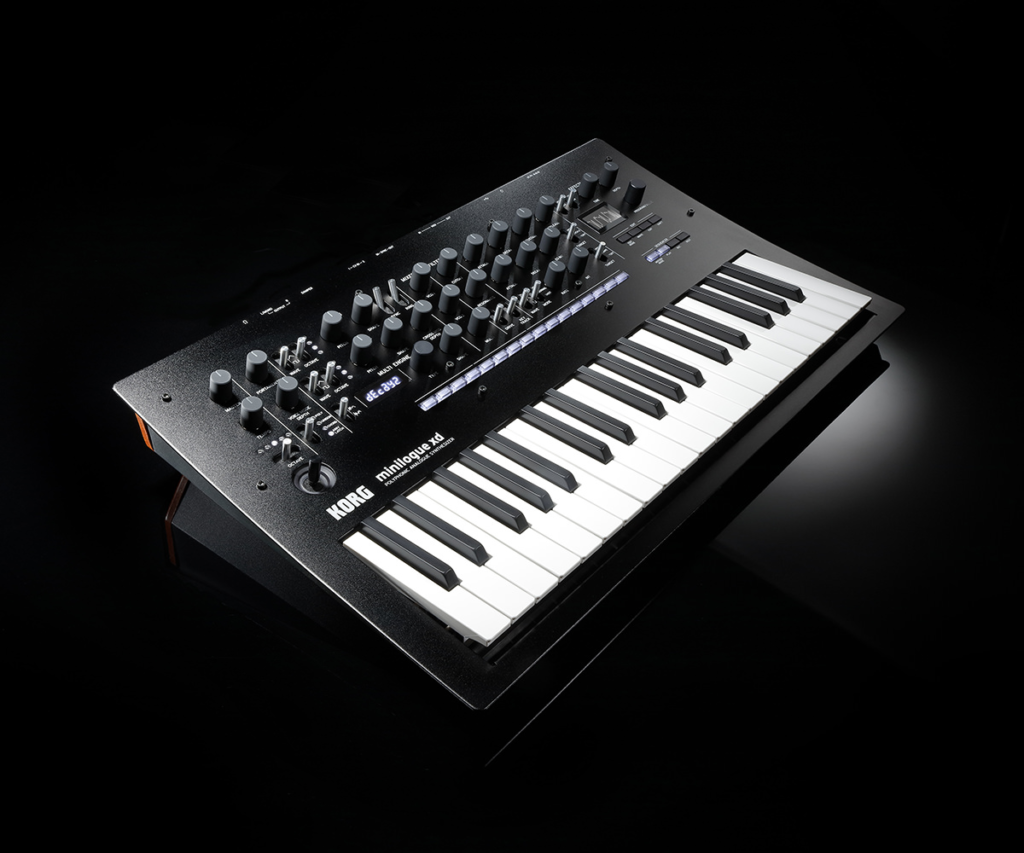
Top 5 MIDI Controllers
MIDI controllers are essential for music production. They allow you to interact with your software and instruments easily.
- Akai MPD232: This controller stands out with its solid build and responsive pads. It features 16 RGB pads, perfect for creating beats and triggering samples. It connects effortlessly using MIDI, which helps in setting up your studio quickly.
- Novation Launchpad X: Built for Ableton Live and Logic Pro, this controller has 64 velocity-sensitive RGB pads. Its integration with DAWs is seamless, giving you quick access to controls. You can create music or control loops with ease.
- Arturia BeatStep Pro: This versatile device works as both a MIDI controller and a sequencer. With two independent melodic sequencers, it lets you create complex patterns effectively. Musicians appreciate its hands-on control for live performances.
- QuNexus by Keith McMillen: Boasting touch-sensitive keys, this controller enhances your musical expression. It supports MPE functionality, allowing for unique sound customisation. The slim design makes it portable for creators on the move.
- Akai Fire Pad Controller: Specifically designed for FL Studio users, it includes a dedicated browser function. The 4 x 16 RGB pad matrix offers extensive options for beat-making and sample playback. This controller helps streamline your workflow when producing tracks.
These MIDI controllers cater to various needs in electronic music production, offering quality and versatility to enhance your creative process.
Top 5 Drum Machines
Drum machines are essential for music producers. They create beats and add rhythm to tracks. Here are the top five drum machines you should consider:
- Akai Pro MPC One+
This is the best overall drum machine for beat-making. It combines sampling, sequencing, and sound design in one compact unit. - Korg Volca Drum
A budget-friendly option that uses a Wave Guide resonator. This creates unique sound effects and fits easily into your setup. - Elektron Analog Rytm MKII
This premium drum machine offers rich, analogue sounds. It excels in live performance with its powerful features. - Roland Aira Compact T-8
Lightweight and portable, this drum machine is great for on-the-go producers. Its versatility makes it ideal for various music styles. - Roland TR-8S
Highly customisable, this model shines during live shows. It can produce a vast range of electronic sounds using classic techniques.
Each of these machines stands out on its own. They help build your sound without needing a laptop. Explore their potential to enhance your music production journey!
Top 5 Samplers
Samplers are crucial for creating sounds and beats in music production. They allow you to manipulate audio and bring your ideas to life.
- Akai MPC One. This sampler is portable and easy to use. It has a touch screen, which makes navigation simple. With 16 pads, you can layer sounds quickly. Its built-in effects help create unique soundscapes.
- Native Instruments Maschine Mikro MK3. A compact option for beginners, this sampler features 16 RGB pads for triggering samples easily. The software comes with a library of sounds to explore and experiment with, helping you make professional tracks right away.
- Elektron Octatrack MKII. This sampler offers extensive features for advanced users. It allows real-time manipulation of samples during live performances, giving you creative freedom on stage. Its powerful sequencer can trigger multiple tracks simultaneously.
- Korg Volca Sample 2. An affordable choice for those starting out, this model is small but packs a punch. It has a simple interface that lets you load samples directly from your computer or phone via an app.
- Roland SP-404SX. Known for its ease of use, this sampler has a classic design that many musicians love. It comes with onboard effects like reverb and filter, which help shape your sounds instantly.
Choosing the right sampler depends on your needs as a producer; think about factors like sample rate and bit depth when deciding what works best for you in electronic music production.
Top 5 Music Sequencers
Music sequencers are key tools for electronic music producers. They help create, edit, and play back music sequences. Here’s a list of the top five.
- MPC X: A powerful groove box with advanced sequencing features. It has an interface similar to DAWs. This allows smooth workflow and great creativity.
- Polyend SEQ: Known for its unique visual interface, it includes 8 tracks and 32 buttons. It makes arranging music fun and engaging. You can quickly create patterns and sequences.
- DIGITAKT: This device combines a drum machine and sequencer in one unit. It offers 8 MIDI tracks along with an 8-track sampler capability. Perfect for beat-making and sound design.
- Arturia KeyStep: Recommended for beginners, it is affordable with a 32-key layout. The integrated sequencer is easy to use, making it a great starting tool in music production.
- Modalics EON-Arp: An arpeggiator plugin that comes with hundreds of chord progressions. With over 30 premium plugins available, it adds depth to your musical creations.
These sequencers each offer distinct features for every level of producer—from beginner to expert.
Unique and Innovative Gear Options
Unique gear can spark creativity. Consider a groovebox for beats on the go. A theremin lets you control sound with your hands, creating eerie melodies. The omnichord offers unique chords and rhythms at your fingertips.
Each piece adds a fresh twist to your music production journey.
Groovebox
Grooveboxes are great tools for music production. They blend sound generation with sequencing tools. This lets producers create, arrange, and perform music all in one device. The first groovebox was the Roland MC-303, released in 1996.
It set off a trend that many musicians love today.
Popular options include the Novation Circuit Tracks at $329.99 and Korg Electribe priced between $399.99 and $419.99; both have strong sampling features. The Akai MPC series is also famous, ranging from $399.99 to over $2,000.
Elektron Digitakt offers eight-track capability for about $749, making it easy to get creative with your beats and samples quickly! Grooveboxes have become essential for making electronic and hip-hop music because they simplify complex tasks like sampling drum kits or synth sounds without needing extra gear.
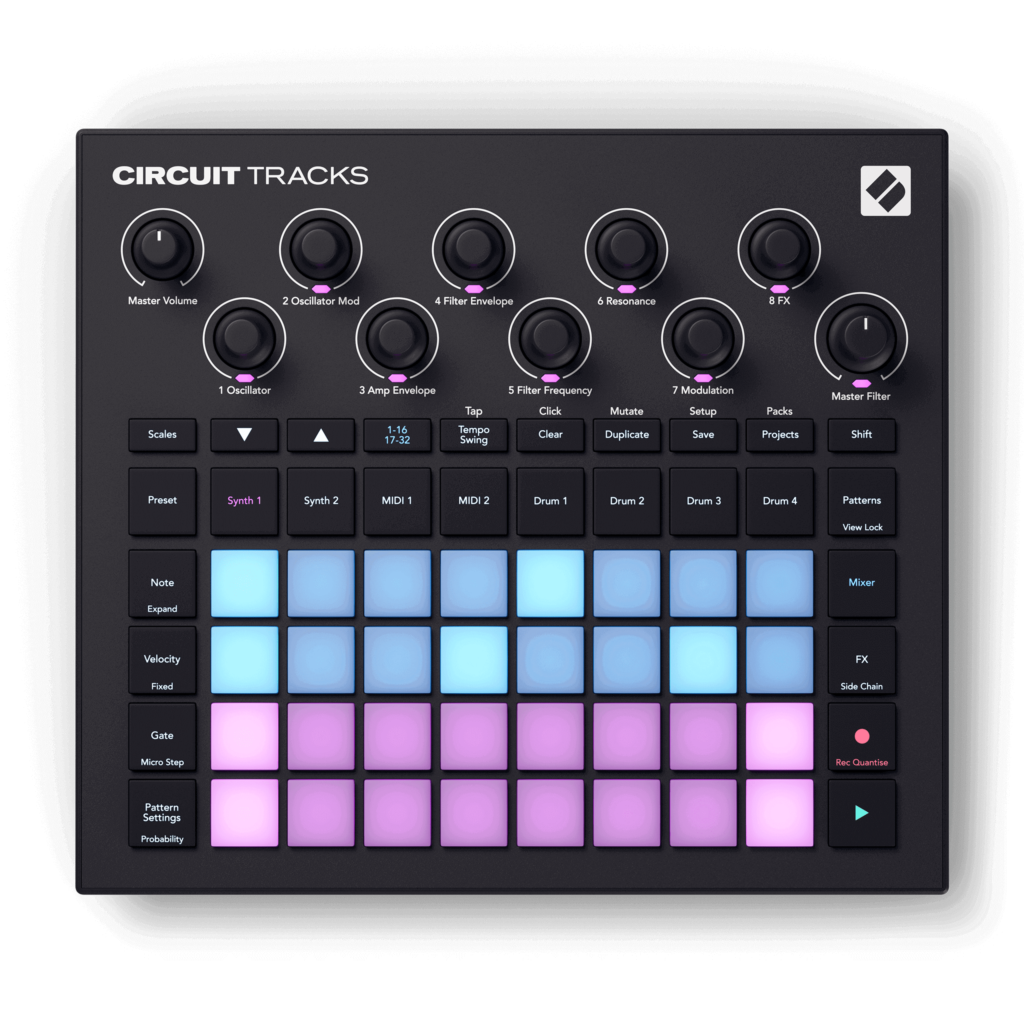
Theremin
The theremin is a unique electronic instrument. Léon Theremin invented it in 1920. It creates sound using electromagnetic fields, which you control with your hands. Moving your right hand changes the pitch, while your left hand controls the volume.
One popular model is the Moog Etherwave Theremin. This device offers a five-octave range and has that classic Moog look. Buyers should think about sound quality and control responsiveness when choosing a theremin.
Beginners may want simpler models to start with, while experts can explore more complex options. Keeping it clean and stored properly helps keep it in good shape too! Many film scores feature its eerie sounds, making it a fun choice for music producers looking to add something special to their tracks or performances.
Omnichord
The Omnichord is a unique electronic instrument. It has automatic accompaniment features, like auto bass and chords. This makes it easy for beginners to create music without complex skills.
The model SUZUKI Omnichord OM-108 will be released in 2024, featuring 61 keys and an ivory colour design.
This lightweight device weighs only 1.2 kg and measures 25 x 45.7 x 5.18 cm. You can connect it via a MIDI jack or use the headphone output for sound playback. Customers rate it at an average of 3.9 out of 5 stars based on reviews from users who enjoyed its clever strumming sensors combined with classic functions in electronic music production since its launch in 1981 by Suzuki Musical Instrument Corporation.
Tips for Beginners in Electronic Music Production
Starting out in electronic music production can feel a bit tricky. Keep it simple at first and add new tools as you grow. Quality headphones and a good audio interface will help you hear every detail in your sound.
These basics set a strong foundation for your musical journey… Have fun with it!
Start simple and build gradually
Begin with basic tools. A Digital Audio Workstation (DAW) and a MIDI controller are great first steps. Focus on simple drum patterns and basslines at first. As you gain confidence, add more layers to your tracks.
Incorporate synths, samplers, or even a monophonic analogue synthesiser to explore new sounds.
Experiment with different styles of music while you learn. Trying out various subgenres can help you find your unique sound, whether that’s melodic house or something else entirely.
Use effective transitions between sections as you progress; this keeps listeners engaged in your musical journey. Prioritise mixing and mastering skills as they evolve too; it makes a big difference in the final quality of your music projects!
Invest in quality headphones and audio interfaces
Investing in quality headphones and audio interfaces is key for electronic music production. Good headphones let you hear every detail of your mix. They help you spot errors and get the perfect sound.
A solid audio interface, like the Focusrite Scarlett 2i2, offers excellent preamp quality with low latency performance. This makes it ideal for beginners and experienced producers alike.
Using an interface like the Audient iD4 MkII adds to your setup too; it includes a JFET instrument input and dual headphone outputs. Quality gear ensures that your recordings are crisp and clear, enhancing your creativity in making beats or melodies.
Don’t forget budget-friendly options like the Behringer U-Phoria UMC22 if you’re looking for something affordable yet effective! Investing in these tools will seriously up your production game.
Conclusion
Choosing the right electronic music gear can be exciting and a bit tricky. You’ll find tools that fit your style and needs, from synthesisers to MIDI controllers. Each piece plays a part in creating your sound.
Explore what you like, invest wisely, and enjoy the journey of making music!



